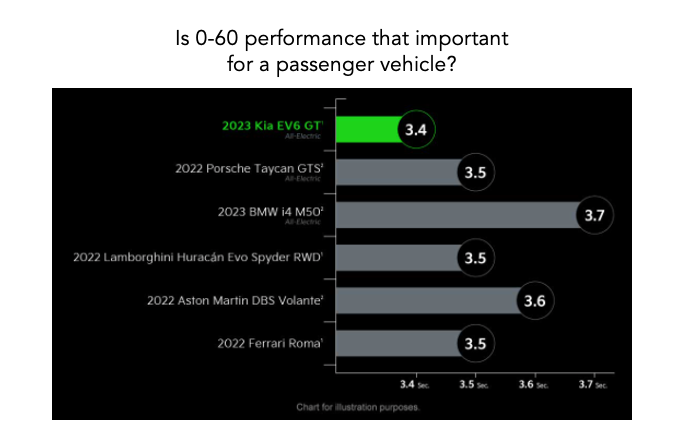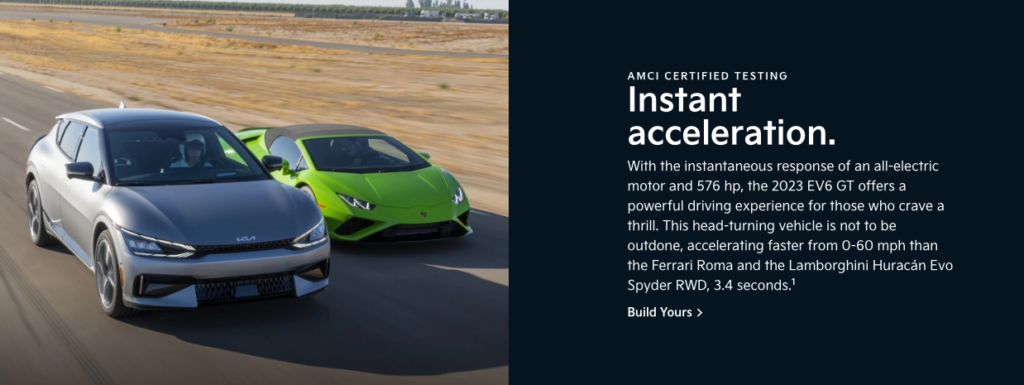One of the advantages for EVs over ICE vehicles is their greater torque and quicker acceleration off the line. Tesla was the first OEM to really focus on this and made it a huge part of the Tesla brand positioning — neck snapping acceleration in a family sedan that makes you go “wow.”
I remember years ago when I let my buddy drive my then Tesla Model S 60 (which is not even that quick by today’s standards), and he was blown away. But after you floor your EV a few times and wow friends, the actual value and benefit of having drag race car type acceleration on open public roads with other humans — is lost on me.
I just received an email from Kia with the chart below touting their 2023 Kia EV6 GT, which has a quicker 0-60 time than various performance vehicles from Porsche, Lamborghini, Aston Martin, BMW, and Ferrari. That is of course impressive — especially from a brand like Kia and a vehicle with a starting MSRP of $63,390 (oh yes, a Kia that starts at $64,000). But does this really matter?

Do We Really Need Race Cars on Public Streets?
Fans of quick acceleration always tout it as a safety aspect. The ability to accelerate out of the way of other vehicles in certain situations, to easily pass vehicles, and to enter freeways at the same speed of the freeway traffic is certainly valuable. Strong acceleration can be a great thing, but I believe there needs to be a limit. Do we really need race cars on the roads, often in the hands of inexperienced and irresponsible drivers endangering the lives of pedestrians, bicyclists, and other drivers?

I’m not a prude — but cars are killing more and more pedestrians and bicyclists — and drag-race car level performance is only adding to the dangers of vehicles and increasing risk and reducing safety.
In the early days of the modern EV all of about 10 years ago, quick acceleration was an important selling point and positioning message. It was needed to eliminate the view by many that EVs were simplify glorified golf carts. But haven’t we progressed beyond that need now? The public has seen President Biden accelerate in a Ford F-150 Lighting. The public gets it now. EVs are quick.
Charging Performance and Experience Needs to be the Focus
What they don’t yet understand is how much range they actually need. And most importantly, how and where to charge an EV. If we want mainstream consumers to adopt EVs, then the OEMs need to focus on solving the poor charging experience that currently exists in the US (at least for non-Tesla drivers).
Tesla created the expectation that EVs can fast and fun. But perhaps the more important thing the company did — was invest in and build out the best, easiest-to-use, and most reliable charging networks (both Supercharger and Destination Charging). Until the other OEMs invest in creating a stellar public charging experience (workin with the charging networks), Tesla’s biggest competitive advantage will remain charging — NOT performance.
The “performance” attribute that OEMs need to shift their focus on — is the charging experience — not 0-60 time.

